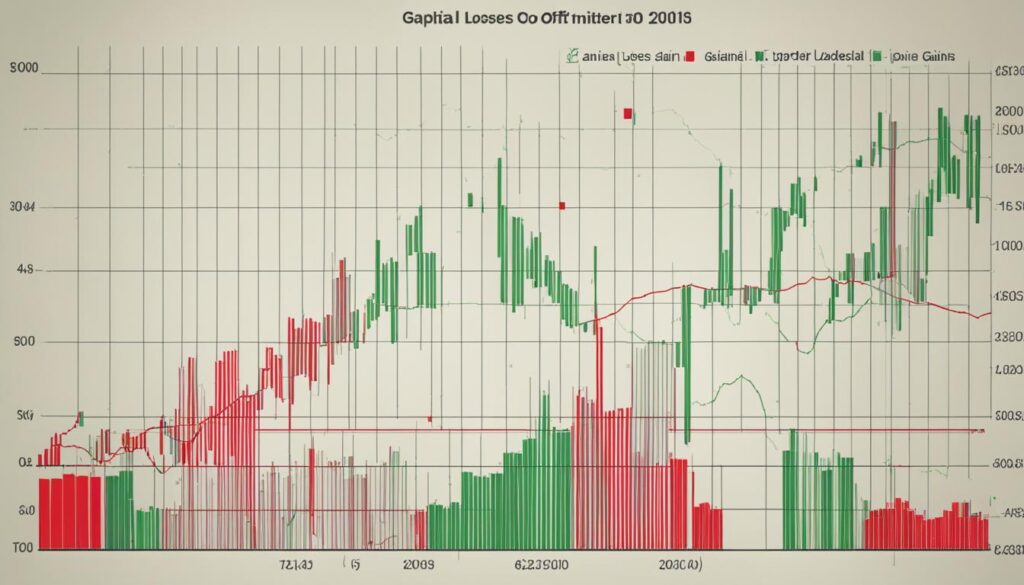The capital gains tax (CGT) often poses a significant burden for investors, discouraging the efficient allocation of capital and hindering economic growth. Fortunately, there are several strategies to legally avoid or minimize CGT, allowing you to maximize your returns and protect your investments. This guide will explore the best methods on how to avoid paying CGT, how to avoid capital tax gain, how not to pay capital gains tax, and how to get out of paying capital gains tax through various investment strategies and tax planning techniques.
Understanding Capital Gains Tax and Its Implications
Capital gains tax (CGT) is a tax levied on the profit made from selling assets, such as investment securities and real estate, for a higher price than what they were purchased for. How to avoid paying CGT begins with understanding the capital gains tax basics and the implications of CGT on your financial decisions and investment strategies.
The Basics of CGT and When It Applies
CGT is crucial to investment management because it only comes into play when the gains are realized—that is, when the assets are sold. The profit made from selling assets like stocks or real estate properties is subject to CGT at the federal level. Federal long-term capital gains tax rates, which depend on adjusted gross income, range from 0% to 20%.
Differences Between Short-Term and Long-Term Capital Gains
An essential aspect of capital gains tax planning is understanding the difference between short-term capital gains and long-term capital gains as well as their respective tax rates. Holding an asset for less than a year leads to higher ordinary income rates for short-term capital gains, while holding it for more than a year triggers lower rates for long-term capital gains. Tax brackets for capital gains are adjusted annually for inflation.
By recognizing the distinctions between short-term and long-term capital gains and staying informed on capital gains tax rates, investors can strategize asset sales and trades to minimize their CGT liability. With comprehensive knowledge about the basics of CGT, its implications, and the tax rates for different holding periods, investors can take a more cohesive and informed approach to managing their capital gains tax obligations.
Realizing Losses to Offset Capital Gains

One approach on how to not pay capital gains tax is by utilizing a strategy known as tax-loss harvesting. This method involves selling investments that have underperformed, resulting in a loss. These losses can then be used to offset taxable capital gains from other investments, as well as up to $3,000 of ordinary income on an annual basis.
By offsetting capital gains with losses, investors can potentially minimize their capital gains tax liability. Furthermore, if the realized losses exceed the taxable gains and the $3,000 limit for ordinary income, investors can carry forward the unused losses indefinitely. By doing so, investors can continue to offset future capital gains and income in the subsequent years, effectively reducing the overall capital gains tax burden on their profitable investments.
Tax-loss harvesting requires careful monitoring of an investor’s investment portfolio to identify which assets have experienced a loss in value. By strategically selling underperforming assets and realizing their losses strategically, investors can take advantage of the tax benefits this method offers. However, it is essential to consider federal and state tax laws when executing tax-loss harvesting, as well as the possible impact on the investor’s overall investment strategy.
Utilizing the Primary Residence Exclusion

The primary residence exclusion is a valuable tax-saving tool for homeowners who wish to minimize the capital gains tax incurred on the sale of their home. This provision, provided by the Internal Revenue Service (IRS), enables homeowners to exclude up to $250,000 of capital gains for individuals, or $500,000 for married couples filing jointly, when selling their primary residence. Taking advantage of the primary residence exclusion ensures that homeowners can reap the benefits of the tax savings that result from long-term homeownership.
How Staying Put Can Lead to Tax Savings
While the primary residence exclusion may seem complicated, it boils down to meeting three main criteria: ownership, use, and the two-year rule. To qualify for the exclusion, the homeowner must have owned and resided in the property as their primary residence for at least two of the five years immediately preceding the sale. It is important to note that the two years of use do not necessarily need to be consecutive.
By fulfilling these criteria, homeowners may experience tax savings from homeownership when selling their primary residence through the capital gains tax home sale exclusion. Continuing to reside in one’s home for an extended period instead of frequently moving to new properties can promote tax savings through the primary residence exclusion. Staying put in a property can also lead to significant appreciation in the value of the home, contributing additional tax savings when using the primary residence exclusion upon sale.
It is essential for homeowners to be aware of the primary residence exclusion and its stipulations to maximize their tax savings from homeownership. The ability to take advantage of this exclusion can help to minimize or eliminate capital gains tax liabilities, making it a critical component of overall financial planning and wealth accumulation.
Benefiting from Home Renovation Strategies

One effective method for avoiding capital gains tax is by incorporating a home renovation tax strategy, allowing homeowners to transform their investment properties into primary residences during the improvement process. Utilizing the primary residence exclusion, individuals can sell the renovated property at a profit without incurring capital gains taxation.
This approach not only serves as a tax avoidance strategy but also contributes to the community by adding value to neighborhood homes and improving overall property values. Nevertheless, it is essential to recognize that capital gains tax may still hinder some individuals from pursuing these types of ventures in the property market.
By avoiding capital gains through home improvement endeavors, homeowners have the opportunity to maximize their investment profits while minimizing their tax liability. Renovating properties and converting them into primary residences allows investors to flip houses in a tax-efficient manner, enjoying the benefits of the primary residence exclusion.
When considering a home renovation tax strategy, it is crucial to consult with tax and real estate professionals to ensure compliance with all applicable laws and regulations. By doing so, individuals can confidently navigate the complexities of the capital gains tax and create financial opportunities that ultimately benefit not only themselves but also their community.
Mastering the 1031 Exchange for Investment Properties

A 1031 exchange is a tax strategy that permits the deferral of capital gains and depreciation recapture taxes when selling rental or investment property. By reinvesting the proceeds into a similar type of investment within 180 days, investors can benefit from like-kind transfers with complex rules that, if followed, lead to deferred capital gains taxes.
Deferring CGT Through Like-Kind Exchanges
An effective 1031 exchange involves like-kind properties. These properties must be of the same nature or character, even if their grade or quality differs. By aligning the two property types, investors can defer capital gains tax by reinvesting the income amassed through the sale of the first property.
Rules and Regulations of a Proper 1031 Exchange
To qualify for a 1031 exchange, investors must comply with strict guidelines. These include identifying the new property within 45 days and completing the exchange within 180 days. Real estate used for personal purposes or property exchanges involving foreign real estate do not qualify for deferral. By adhering to these rules, investors can successfully defer their capital gains tax through a 1031 exchange.
Identifying Opportunities for 1031 Exchanges
When pursuing a 1031 exchange, it is crucial to identify suitable opportunities for deferring capital gains taxes. The potential property should add economic value by being related to business or investment. Savvy investors plan strategically to find the right property, maximizing their capital gains tax deferral while simultaneously contributing to their overall investment portfolio.
Maximizing Benefits of Exchange-Traded Funds (ETFs)

ETFs are an efficient investment option for minimizing CGT liability due to their unique structure that avoids triggering capital gains taxes. They achieve this through stock exchanges that allow the switching of indexed stocks without realizing capital gains for the investor, ultimately transferring the cost basis to new securities.
ETFs provide a solution for investors seeking a tax-efficient way to diversify their portfolios. Not only do ETFs offer diversification across a wide range of asset classes, but they also minimize the capital gains tax impact by enabling investors to switch between different securities within the index without incurring capital gains taxes.
One of the key advantages of ETFs in minimizing CGT is the way that they handle the buying and selling of the underlying assets. When an investor wants to sell an ETF, they do not sell the individual stocks within the fund. Instead, they sell the ETF units to another investor. This means that there is no need to realize capital gains at the fund level, and therefore, no capital gains taxes are triggered.
In addition to minimizing CGT, ETFs also offer various other benefits that can help investors achieve their financial goals. For example, ETFs typically have lower fees compared to actively managed mutual funds, and they provide a high level of transparency in terms of holdings and pricing. Moreover, their liquidity allows for more effortless trading throughout the day, creating an investor-friendly environment.
To maximize the benefits of exchange-traded funds and minimize capital gains taxes, consider incorporating ETFs into your investment portfolio. By taking advantage of their tax-efficient structure, you can potentially reduce your CGT liability while still achieving your desired financial objectives.
Investing in Retirement Accounts: Traditional IRA and 401(k)

Avoiding capital gains tax (CGT) is one of the key concerns for many investors, particularly those seeking to grow their wealth for retirement. Traditional Individual Retirement Accounts (IRAs) and 401(k) investments are two retirement account options offering tax-deferred growth, which can significantly help investors avoid CGT. These types of accounts eliminate the taxes on trades within the account and enable investors in higher tax brackets to reduce their immediate income, potentially shifting into a lower tax bracket upon withdrawal. Furthermore, they provide an excellent framework for strategic asset rebalancing without incurring CGT.
Traditional IRAs and 401(k) plans are both tax-advantaged retirement vehicles that primarily accept pre-tax contributions. Pre-tax contributions reduce your taxable income, which may result in lower taxable income and a smaller tax bill. Earnings within the account grow on a tax-deferred basis until retirement, essentially avoiding short-term capital gains tax.
By investing in a traditional IRA or 401(k), you can defer CGT until retirement, which is particularly appealing for investors in higher tax brackets. At the time of withdrawal, assets are taxed as ordinary income at your current tax rate. This may be beneficial for those who expect to be in a lower tax bracket during retirement years or those who want to take advantage of lump-sum withdrawals, annuities, or a combination of both to reduce CGT exposure.
Rebalancing your investment portfolio within traditional IRA and 401(k) accounts is another advantage in avoiding CGT. Since the capital gains tax is not applied to transactions made within these accounts, you can strategically reallocate assets or purchase new investments without incurring extra capital gains liabilities. This allows investors to maintain a balanced and diversified portfolio without worrying about the tax implications of selling assets.
In conclusion, investing in traditional IRA and 401(k) accounts provides a viable solution for minimizing CGT impact on your overall financial strategy. These tax-deferred retirement accounts promote long-term savings, decrease taxable income, and facilitate strategic asset rebalancing, ultimately assisting investors in their quest to avoid paying CGT.
Choosing Roth IRA and Roth 401(k) for Tax-Free Growth

Roth IRAs and Roth 401(k)s are attractive retirement savings strategies that provide tax-free growth, enabling investors to avoid capital gains tax (CGT) altogether. These accounts are funded with after-tax dollars, and as a result, both contributions and earnings can be withdrawn tax-free in retirement, provided certain conditions are met.
Comparing Traditional and Roth Retirement Accounts
In contrast to traditional IRA and 401(k) accounts that offer tax-deferred growth, Roth accounts emphasize long-term tax savings by providing tax-free growth. This feature makes Roth accounts particularly advantageous for those who are not currently in higher tax brackets or are far from retiring and thus have time to benefit from tax-free compounding. Additionally, Roth accounts offer several other benefits, including:
- No required minimum distributions (RMDs) during the account holder’s lifetime.
- Tax-free inheritance for the account holder’s heirs, making Roth accounts an effective wealth transfer tool within a comprehensive estate plan.
- The ability to contribute to a Roth IRA after age 70½, assuming there is still earned income, unlike traditional IRAs that impose age restrictions on contributions.
While the upfront tax deduction on traditional IRA and 401(k) contributions may seem more appealing to some investors, especially those in higher tax brackets, it is essential to consider the long-term tax benefits that Roth accounts offer. By investing in a Roth IRA or Roth 401(k), individuals can build a more tax-efficient and diversified retirement savings portfolio, allowing for greater control over their retirement income and ultimately, their financial future.
How Health Savings Accounts Can Aid in Avoiding CGT

Health Savings Accounts (HSAs) offer a unique and valuable triple tax benefit, making them an excellent tool in minimizing or even avoiding capital gains taxes on the account’s investment gains. These tax advantages include:
- Tax-deductible contributions
- Tax-free account growth
- Tax-free withdrawals for qualified health expenses
Investing in HSAs allows individuals to allocate their funds into various investment options, such as stocks, bonds, and mutual funds. As the investments grow within the HSA, they are not subject to capital gains taxes. This tax-free investment growth directly aids in avoiding CGT while providing an additional source of funding for qualified health expenses.
Furthermore, HSA funds can be rolled over from year to year, with no “use it or lose it” restrictions. This rollover feature enables account holders to keep their funds invested and continue to enjoy tax-free growth, allowing the potential to accumulate significant savings for future medical expenses or even retirement.
It is essential to note that, in order to be eligible for an HSA, individuals must be enrolled in a high-deductible health plan (HDHP). Also, there are annual contribution limits for HSAs, which can vary depending on the type of coverage (single or family) and the account holder’s age.
In conclusion, Health Savings Accounts should not be overlooked when considering strategies to minimize or avoid capital gains taxes. By allowing for tax-free investment growth and tax-free withdrawals for qualified health expenses, HSAs provide a unique opportunity to reduce overall tax liability while saving for healthcare costs and future financial goals.
Gifting Stocks to Family Members in Lower Tax Brackets

Gifting appreciated stocks to family members in lower tax brackets can be an effective capital gains tax strategy that results in tax savings for both the giver and the recipient, while boosting the family’s overall wealth. When highly appreciated securities are transferred to a family member in a lower tax bracket, they assume the original cost basis for the gain computation. However, they only pay taxes at their own lower rates when the gifted assets are eventually sold.
By employing this lower tax bracket benefits-related strategy, the giver can potentially avoid a significant Capital Gains Tax (CGT) on the growth of the gifted assets. This can be particularly valuable for donors in high tax brackets, who would otherwise face a considerable tax liability upon the sale of the appreciated stocks.
Keep in mind that there are limits on the amount of assets that can be gifted tax-free in a given year. As of 2021, the annual gift tax exclusion is $15,000 per individual ($30,000 for married couples filing jointly), which means that gifts within these limits can be made without triggering the federal gift tax.
It is important to be aware of the implications of the so-called “kiddie tax” when gifting appreciated stocks to children or young family members under the age of 24. This tax rule may subject the unearned income of the recipient to the tax rates of their parents, effectively negating the advantage of the lower tax bracket. Consult a tax professional to ensure that this strategy is appropriate for your specific situation.
Overall, gifting appreciated stocks to family members in lower tax brackets can be an advantageous financial move for both the donor and the recipient. While the recipient can still benefit from the investment’s growth without incurring a high tax liability, the donor can lessen their own tax burden and still provide a valuable gift to their loved ones. Proper planning and professional advice can ensure the legality and effectiveness of this strategy.
Moving to a State with Lower Capital Gains Tax Rates

State taxes can significantly impact your capital gains tax (CGT) liability. While some states like California have high rates, others such as Florida and Texas have none. Therefore, relocating for tax benefits to a state with low or no capital gains tax can be a strategic move to reduce overall tax burdens. However, it’s essential to note that such relocations contribute no national economic value.
Impact of State Taxes on CGT
The impact of state taxes on CGT could substantially affect your financial planning and investment strategies. Living in a state with high capital gains tax rates can discourage asset sales and investment reallocations, potentially leading to less optimal investment outcomes. Conversely, residing in low- or no-tax states can help you avoid losses and maximize returns by reallocating resources more efficiently.
Before considering relocation for tax benefits, evaluate the long-term feasibility of such a move. Factors to consider include employment opportunities, living costs, and quality of life. Additionally, consult with a financial advisor to ensure that relocating aligns with your personal financial goals and circumstances.
Strategic Charitable Giving of Appreciated Stocks

Donating appreciated stocks to charity is a smart tactic for investors who want to minimize their capital gains tax (CGT) liability while supporting a cause they care about. When you donate stocks or other appreciated assets to charity, you can take advantage of a tax deduction equivalent to the fair market value of the donated assets. This allows you to bypass capital gains taxes that would have been incurred if the assets were sold instead.
Charities also benefit from this strategy, as they can sell the donated stocks without incurring CGT, ensuring that the full value of the donation goes towards their mission. This incentive encourages strategic philanthropy while offering donors tax benefits.
When considering charitable giving as part of your overall financial strategy, it’s essential to select a reputable charity with a mission that aligns with your values. In addition to the financial benefits of donating appreciated stocks, an added benefit is the emotional satisfaction from knowing your contributions are making a positive impact.
In conclusion, strategic charitable giving of appreciated stocks allows individuals to support their favorite causes while minimizing their CGT liability. This powerful combination of philanthropy and tax savings makes it a popular strategy for investors who want to make a difference while effectively managing their tax burden.
The Buy and Hold Strategy for Investment Assets

The buy and hold strategy is a long-term investing approach that involves keeping investment assets for extended periods, usually in diversified index funds. This strategy helps investors in avoiding capital gains tax (CGT) by deferring the realization of capital gains. While it is essential to reallocate the portfolio periodically to maintain proper diversification and risk management, this rebalancing often occurs without the need to sell assets, thereby locking in capital and deferring CGT.
Investing with a buy and hold strategy not only minimizes the CGT liability but also saves time and resources that would be spent on frequent trading. Additionally, it allows investors to benefit from the compounded growth of their investments, as well as stay invested during market fluctuations, thus maximizing their long-term returns over an extended period.
One crucial aspect of the buy and hold strategy is the choice of assets. Investors should select high-quality investments with strong historical performance and potential for future growth. A diversified portfolio reduces risk and ensures steady returns in varying market conditions.
Another aspect to consider when implementing a buy and hold strategy is the time horizon. By extending the investment period, investors can defer capital gains and eventually minimize CGT when assets are sold. Additionally, holding assets for over a year qualifies them for lower long-term capital gains tax rates, which offers a further advantage.
In conclusion, the buy and hold strategy is an effective approach for long-term investing that can help investors defer and avoid capital gains taxes. By focusing on high-quality assets, maintaining a diversified portfolio, and having a long-term investment horizon, investors can minimize their tax liabilities and maximize their returns.
Postponing Capital Gains by Planning for Estate Transitions

Estate planning is a valuable tool for individuals with significant investments, providing an opportunity to defer capital gains taxes indefinitely and preserve wealth for future generations. Through careful planning, individuals can minimize their capital gains tax exposure, thereby protecting their hard-earned assets from excessive taxation.
One of the primary benefits of estate planning is the ability to defer capital gains tax, particularly through the utilization of the stepping up basis rule. When an individual dies holding appreciated investments, their heirs receive a step-up in cost basis to the fair market value of the assets at the time of the owner’s death. This eliminates taxes on the asset’s lifetime growth, resulting in substantial capital gains tax postponement.
By developing a comprehensive estate plan that includes the transfer of appreciated assets, individuals can effectively reduce or eliminate capital gains tax liability on inherited investments. This approach not only enables the postponement of capital gains tax, but also has the potential to eliminate the tax altogether, depending on the specific circumstances.
It is essential to consult with knowledgeable estate planning attorneys and tax professionals to ensure that assets are structured and transferred in a way that maximizes tax advantages while adhering to relevant regulations. Failure to comply with the appropriate rules and procedures can result in significant financial penalties and the unnecessary loss of valuable assets. Proper estate planning is critical for preserving wealth for future generations and ensuring a seamless transition of assets upon an individual’s death.
Ultimately, estate planning is a vital component of a holistic financial plan, offering valuable capital gains tax postponement benefits through the strategic use of the stepping up basis rule. By working with experienced professionals and taking advantage of this tax-saving opportunity, individuals can protect the growth of their investments and optimize their overall financial wellbeing.
Timing and Controlling the Sale Date of Assets

One crucial aspect of minimizing capital gains taxes is strategically timing the sale of your assets, such as stocks and properties, to align with years of lower expected income. By carefully controlling asset sale dates, investors can optimize the available legal tax thresholds and potentially qualify for lower capital gains tax rates, even down to a 0% rate under specific income levels.
Legal Tax Thresholds and Realizing Capital Gains Over Time
Investors have significant control over when and how much capital gains they realize each year, which influences their overall tax strategy. Managing the sale of assets can help in timing capital gains realization more effectively, optimizing tax liability reduction. This strategy includes selling long-term holdings when your taxable income levels drop, which could be attributed to retiring, a reduction in salary, or other uncontrollable factors. Moving certain transactions to another tax year can also provide a better chance of staying within a favorable tax bracket.
Knowing the legal tax thresholds is paramount. As the tax brackets and percentage rates associated with long-term capital gains tax are based on income levels, optimizing the timing of asset sales can be a powerful way to minimize overall tax liability.
In conclusion, effective control over asset sale dates and a keen understanding of legal tax thresholds allow investors to significantly impact their capital gains realization and reduce tax liability. It’s an essential aspect of a successful long-term financial strategy. Consult a professional financial advisor for personalized advice on managing asset sales and taking advantage of these strategies tailored to individual circumstances.
Frequently Asked Questions
What is the difference between short-term and long-term capital gains?
Short-term capital gains result from assets held for less than a year, and are taxed at higher ordinary income rates. Long-term capital gains come from assets held for more than a year and benefit from reduced tax rates, as they encourage long-term investments.
How does the primary residence exclusion help avoid capital gains tax?
The primary residence exclusion allows homeowners to exclude up to $250,000 (or $500,000 for married couples) of capital gains from the sale of their primary residence. This helps homeowners who stay in their homes for an extended period avoid significant capital gains tax liabilities.
What is a 1031 exchange and how does it defer capital gains tax?
A 1031 exchange is a tax strategy that allows investors to defer capital gains and depreciation recapture taxes when selling rental or investment property by reinvesting the proceeds into a similar type of investment within 180 days. By adhering to strict rules and engaging in like-kind property exchanges, investors can defer capital gains taxes.
How do exchange-traded funds (ETFs) minimize capital gains tax?
ETFs are structured to avoid triggering capital gains taxes by allowing the switching of indexed stocks without realizing capital gains for the investor. This transfers the cost basis to new securities, providing a tax-efficient investment option.
What are the benefits of traditional and Roth retirement accounts for avoiding capital gains tax?
Traditional IRAs and 401(k)s offer tax-deferred growth, allowing for strategic asset rebalancing without incurring CGT. Roth IRAs and Roth 401(k)s are funded with after-tax dollars and provide tax-free growth, avoiding CGT altogether, and extending tax-free advantages to account holder’s heirs.
How can gifting stocks to family members in lower tax brackets help avoid CGT?
Gifting stocks to family members in lower tax brackets allows them to assume the original cost basis for gain computation, but they pay taxes at their lower rates. This can result in significant CGT avoidance on the growth of gifted assets.
What is the impact of state taxes on capital gains tax?
State taxes can significantly affect CGT liability, with some states like California having high rates and others like Florida and Texas having none. Relocating to a state with low or no capital gains tax can be a strategic move to reduce the overall tax burden.
How does donating appreciated stocks to charity help minimize capital gains tax?
Donating appreciated stocks to charity allows individuals to receive a tax deduction equivalent to the fair market value while bypassing capital gains taxes. Charities can sell the stock without incurring CGT, providing an incentive for strategic philanthropy and minimizing the donor’s tax liability.
How does timing the sale of assets help in capital gains tax avoidance?
Timing the sale of assets to align with years of lower expected income can optimize tax thresholds, possibly qualifying for a 0% capital gains rate under certain income levels. Investors can control when and how much in capital gains they realize each year, impacting their overall tax strategy.
The Bottom Line
As investors explore ways on how to get out of paying capital gains tax, understanding and implementing various capital gains tax avoidance strategies become essential. From leveraging tax-advantaged accounts to employing specific investment tactics such as tax-loss harvesting and charitable giving, these methods can help minimize CGT liability effectively. In addition, considering geographic and estate planning implications can play a significant role in reducing capital gains taxes.
It is essential to tailor these approaches to each individual’s financial situation, long-term goals, and personal circumstances, as the effectiveness of these strategies may vary based on changing tax laws and personal financial standing. Therefore, seeking expert advice from financial professionals can be advantageous when evaluating the available options for executing a comprehensive financial plan.
Being proactive in understanding and implementing methods on how can I reduce capital gains tax can greatly benefit investors and contribute to their long-term financial success. By consistently keeping up with the latest tax codes, utilizing tax-advantaged accounts, and considering the broader context of personal finance, financial planning, and investment strategies, individuals can effectively navigate the complexities of CGT and optimize their investment returns.






